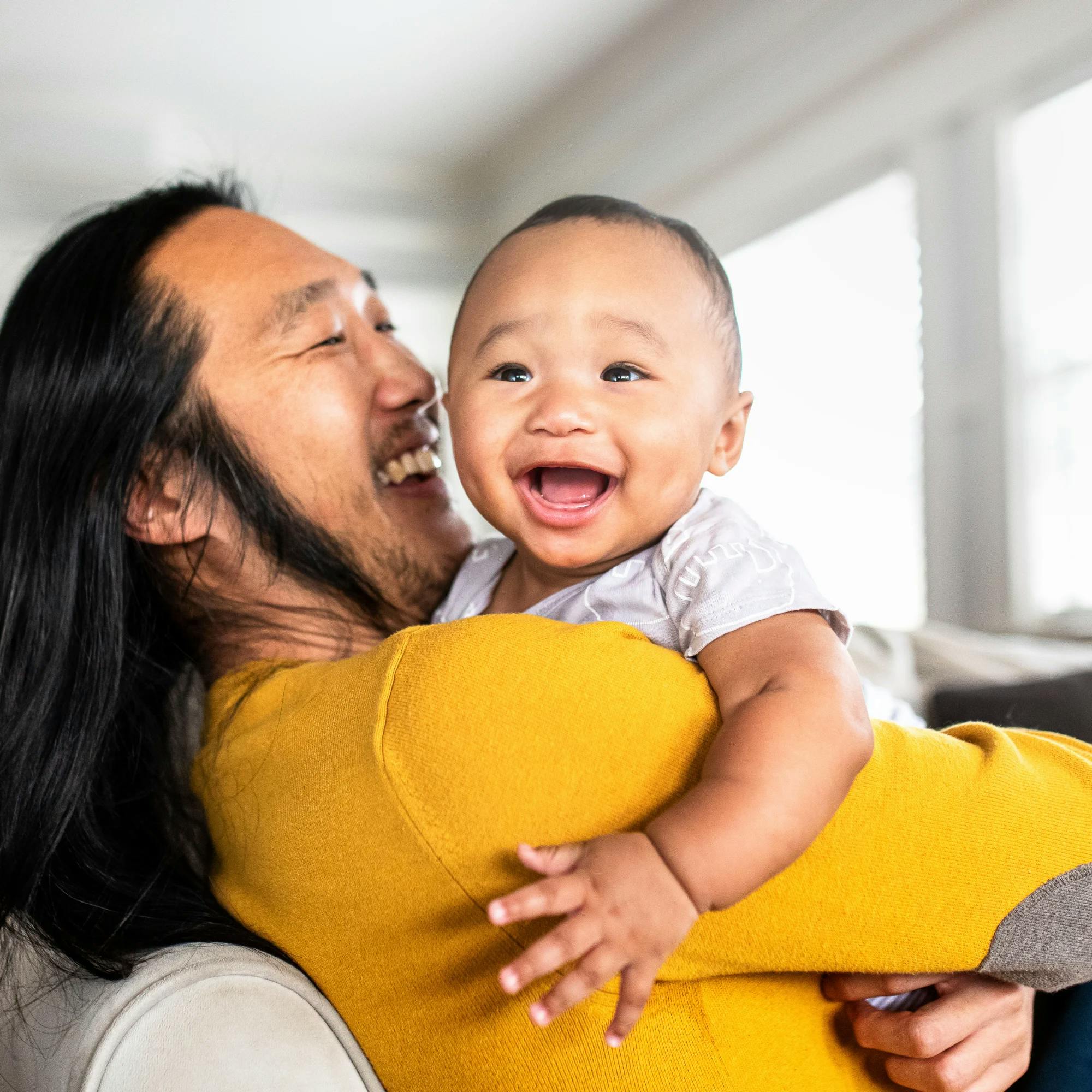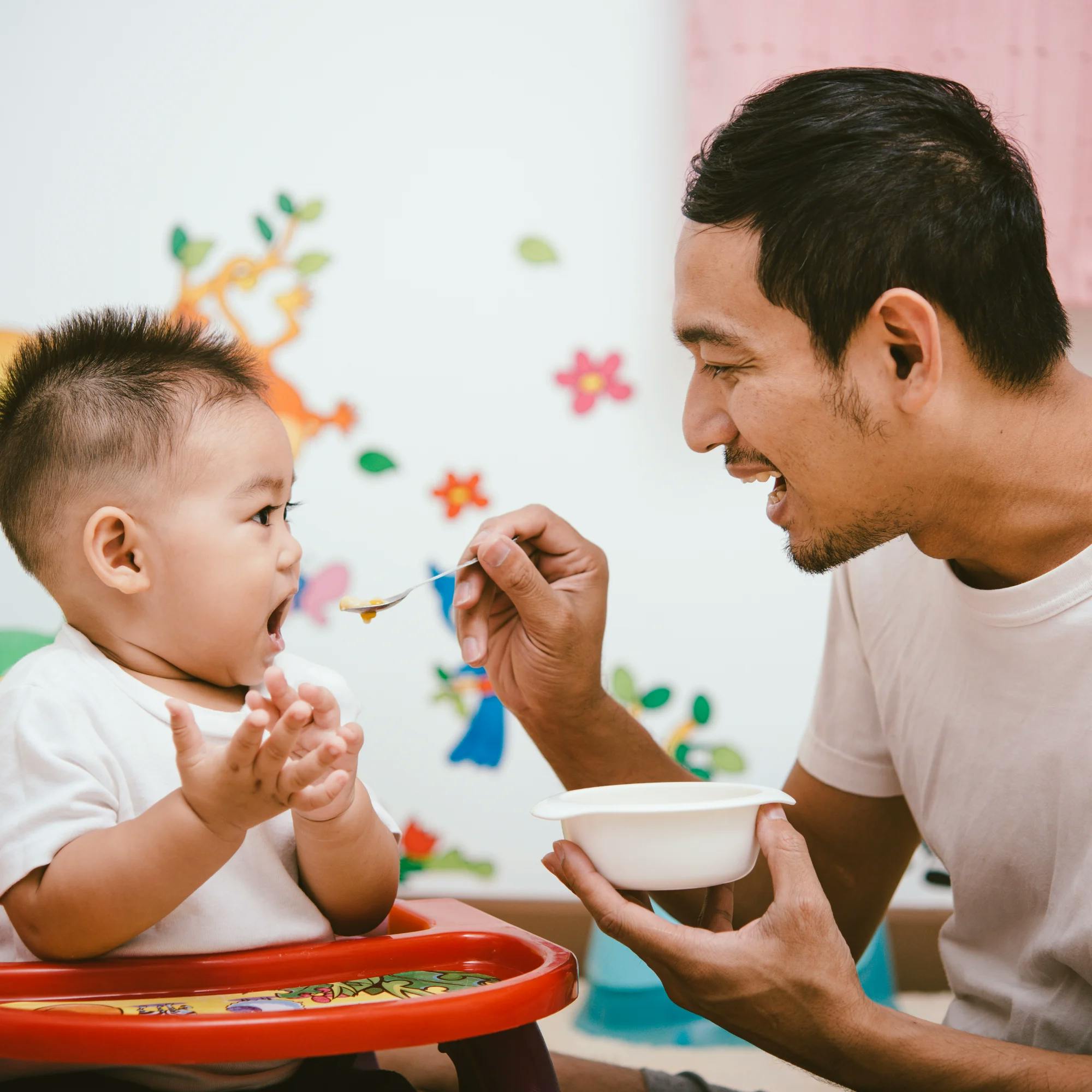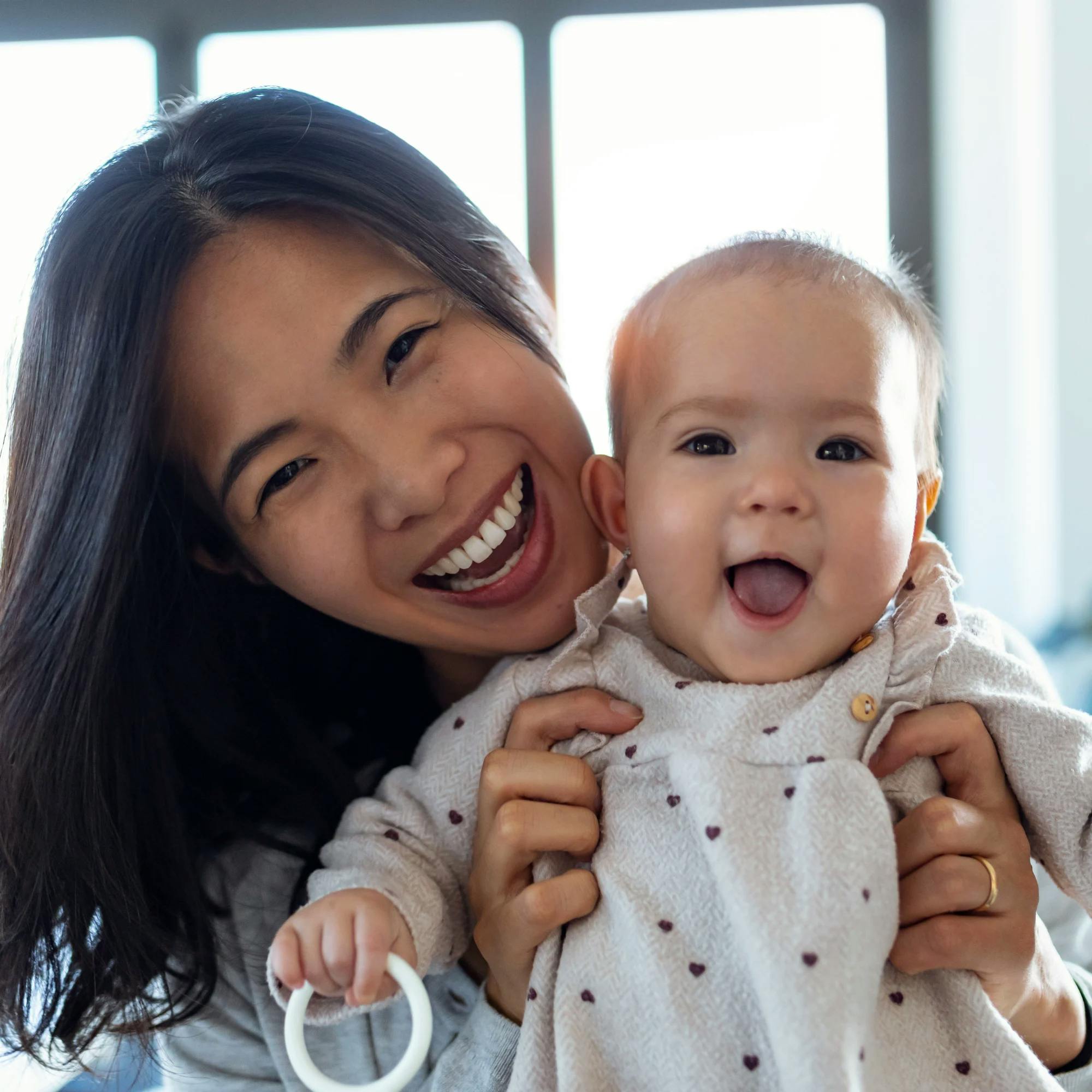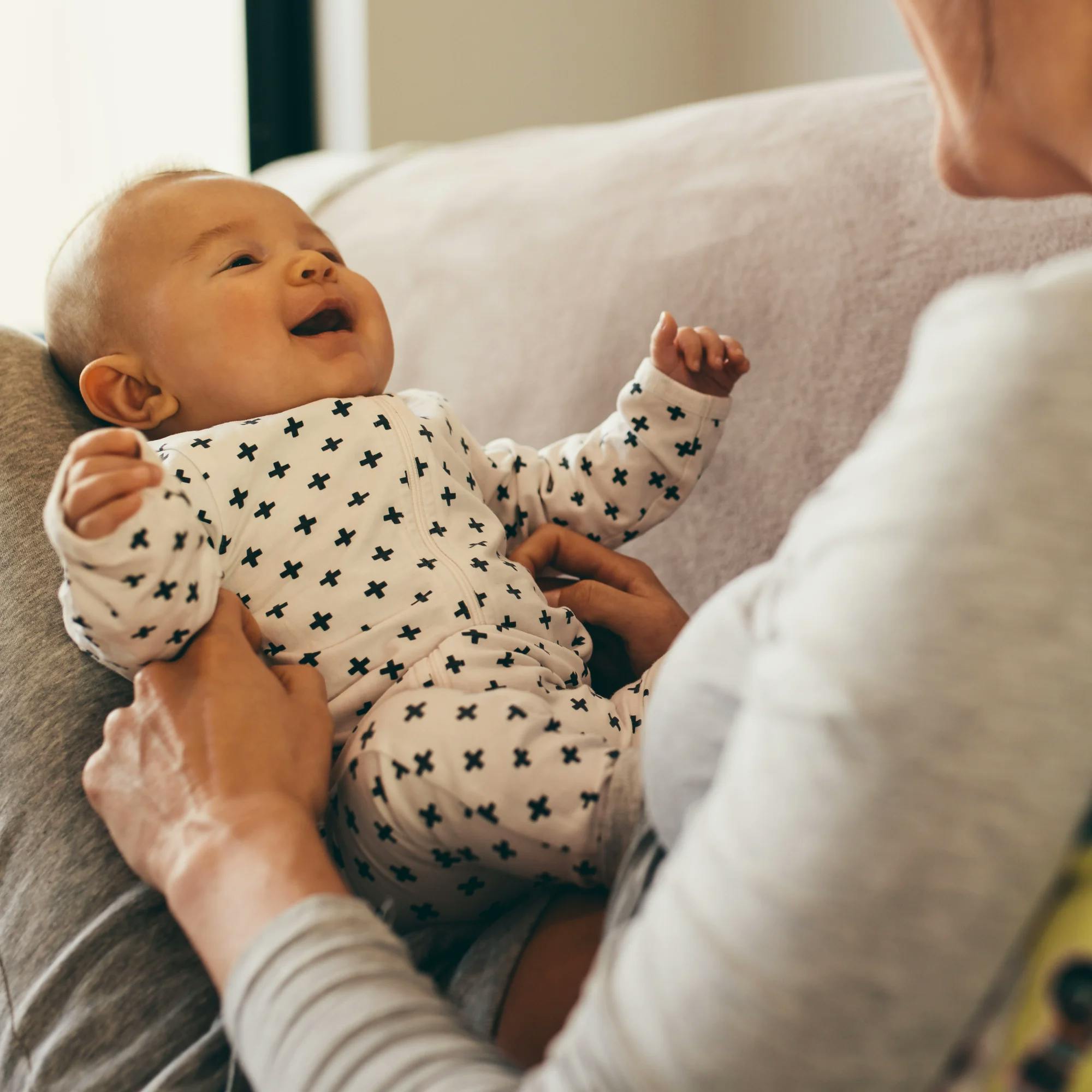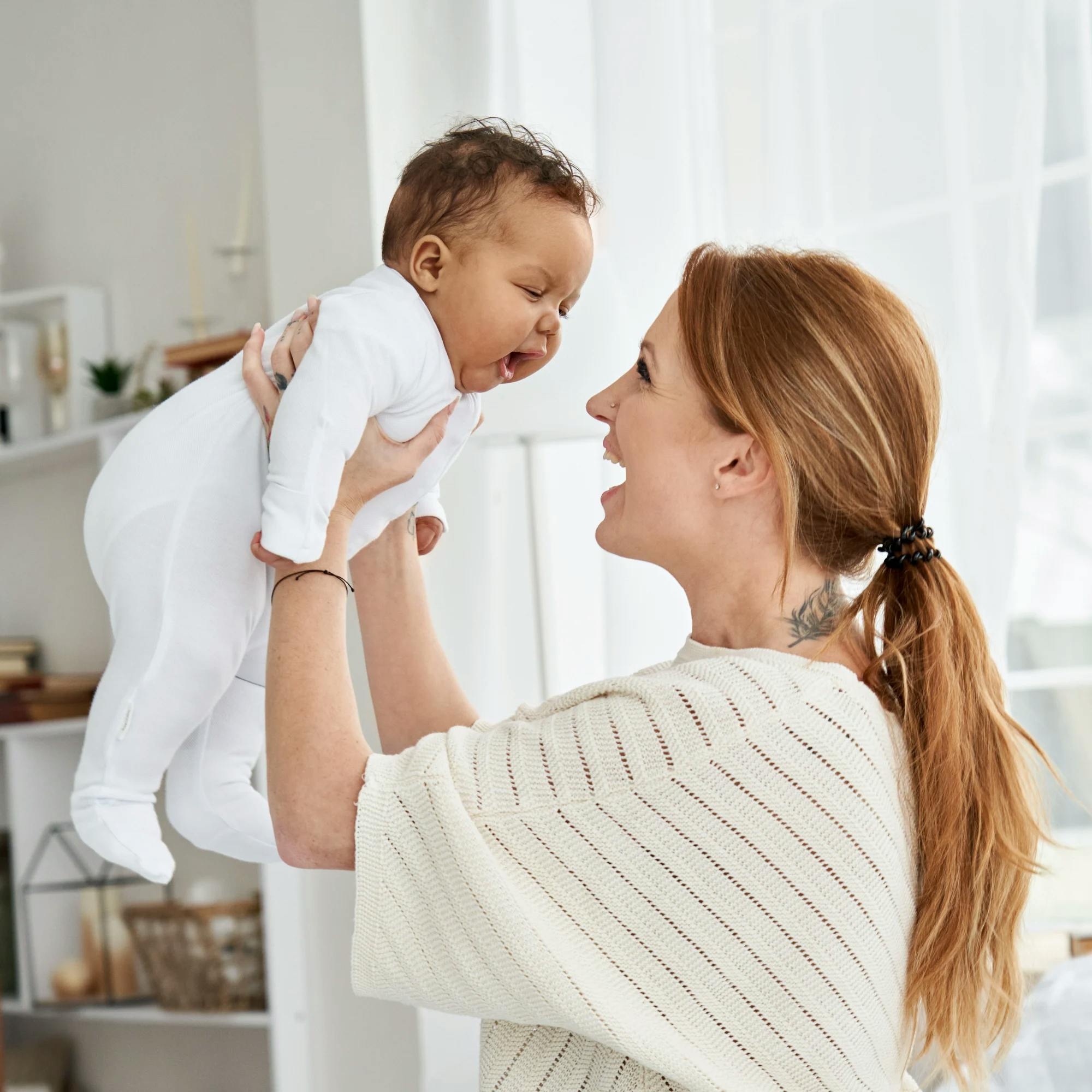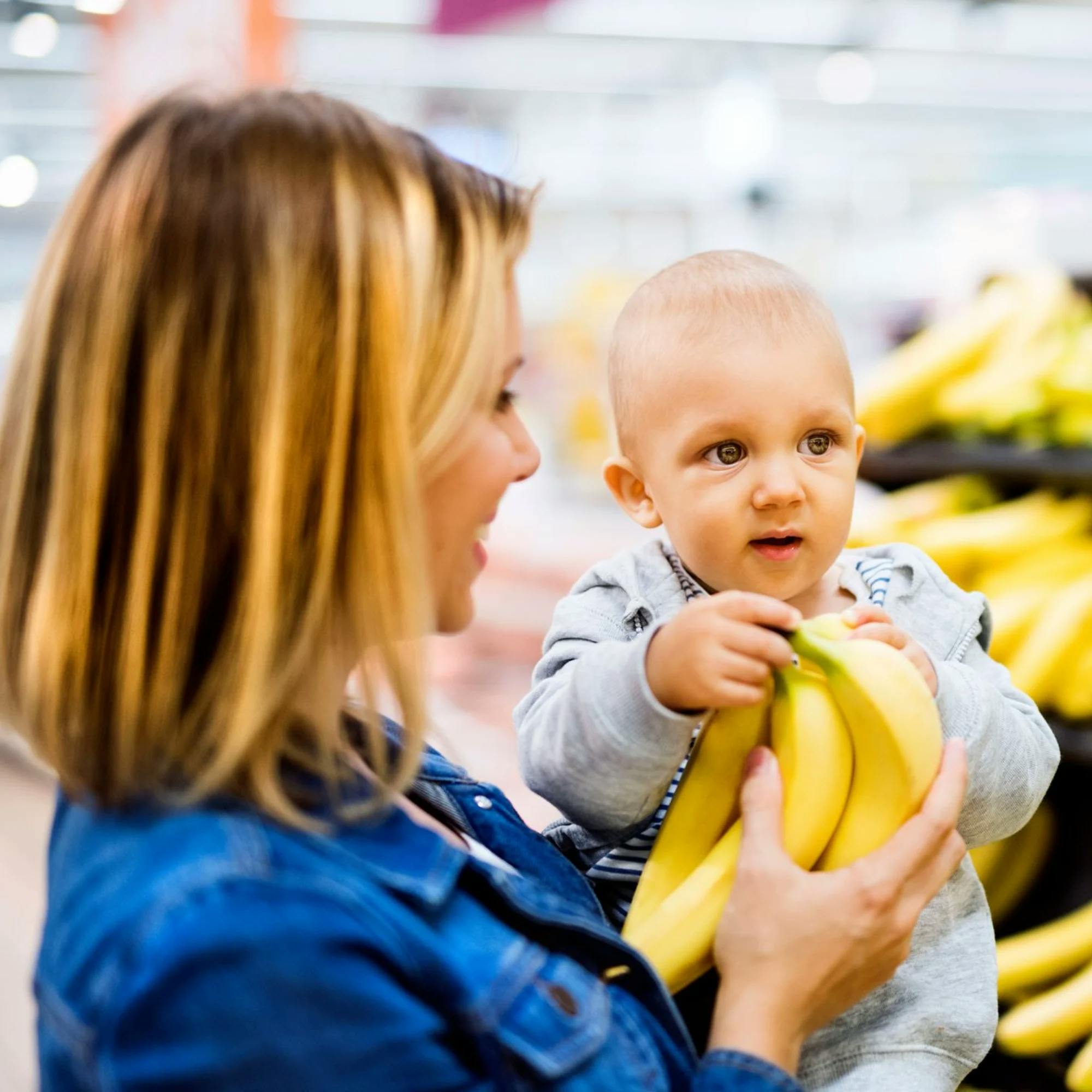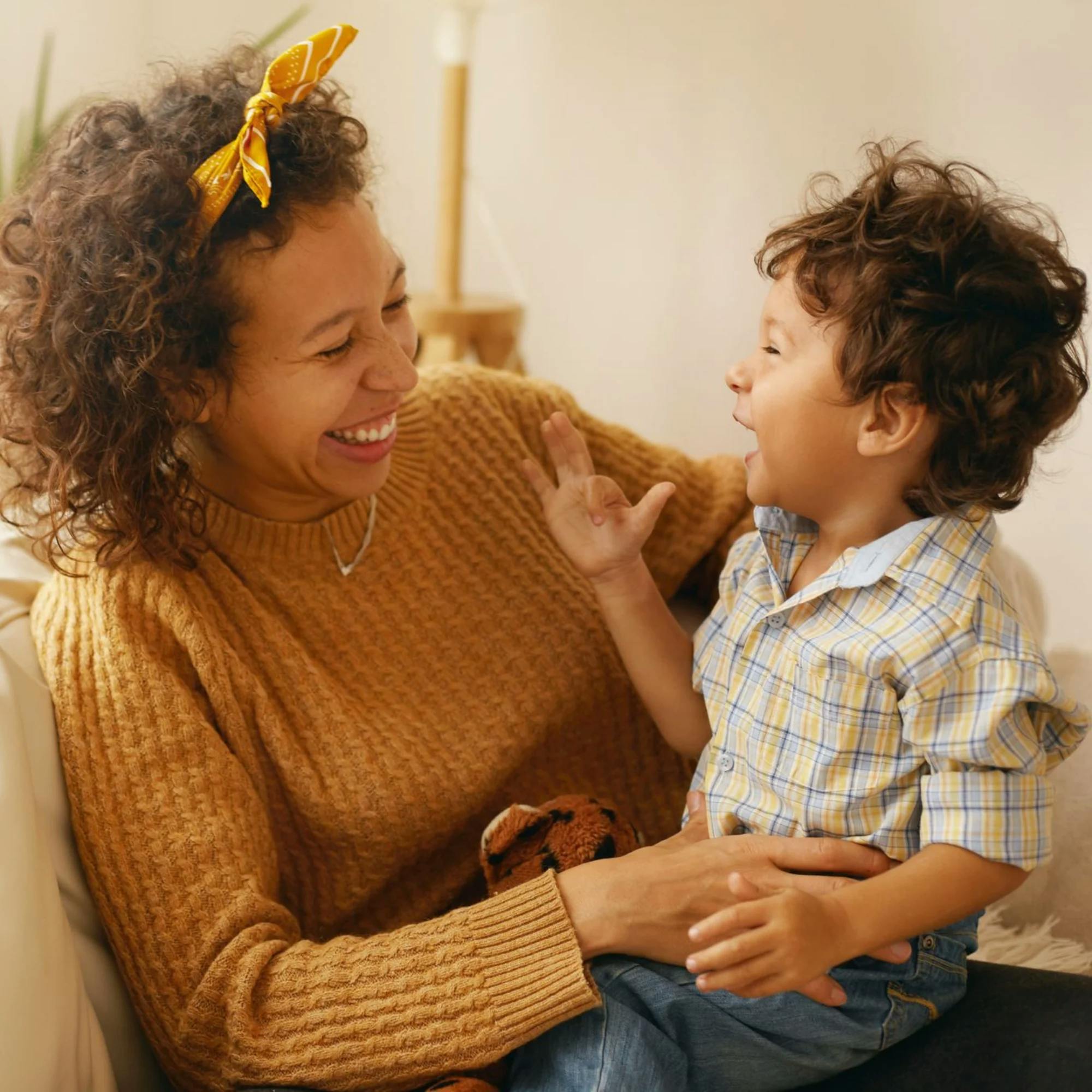How do babies communicate?
As parents and caregivers, we all look forward to the day our child will start talking to us. Your toddler’s first word is a huge milestone, and it’s one to celebrate! But there are many other communication milestones that are important for speech and language development. If you don’t know what to look for, they can be easily missed.
Read on to learn about 5 key milestones, what they mean, and how they help your child learn to talk. When you see your child mastering these skills, you’ll have even more reasons to celebrate. And if your baby doesn’t seem to be quite on track, you’ll know when to seek extra support.

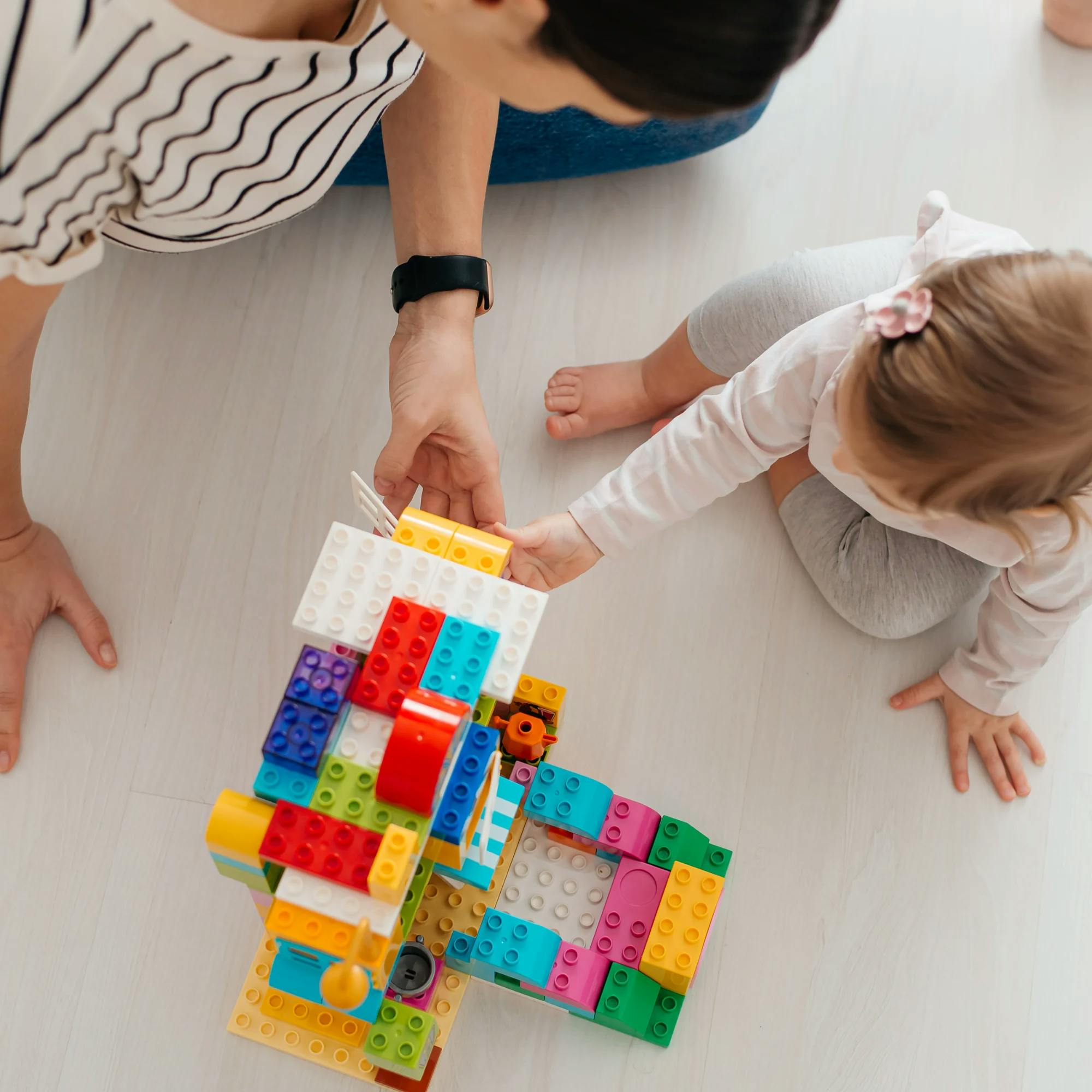
Milestone: First smile and laugh
Who doesn’t love seeing those sweet baby smiles? Or hearing a baby’s tiny giggle? The first smile and first laugh are exciting milestones, but you may not realize that they’re linked to communication development.
You’ll likely see your baby begin to smile when they’re close to 3 months old. When a baby smiles at an object or a person, they are responding to that object or person. And you can’t have communication without a response! Think about it. If one person speaks and the other person doesn’t respond in any way, the communication stalls. Smiling is one of the earliest forms of communication response.
When a baby smiles at an object or a person, they are responding to that object or person.
The first laugh often occurs around the 3- to 6-month mark. Laughter also involves a child responding to something. In addition, it shows some beginning variation in their vocalization abilities. (Plus, it’s a nice break for you from all the crying that’s probably happening at this stage!)
Improving their vocal abilities is a huge step for babies. Their vocal skills grow from crying, to cooing, to laughing, to babbling, and eventually to talking.
Milestone: Gesturing and using baby signs
Many babies can begin using gestures and signs to communicate between 7 and 12 months of age. As a bonus, teaching your baby to gesture can actually help them develop verbal skills!
One landmark study in 2005 showed that children who first produced a gesture and word combination were more quickly able to combine words together to create short phrases. This is a key milestone for 2-year-olds.
Pointing is one of the simplest and most effective forms of gesturing. Babies can point to items they see or want to play with before they’re able to say the name of the item. Take some time to show your child how to point and practice pointing with them.
You can also begin to teach sign language to your child to help them communicate their wants and needs. Functional words, and the names of things they may want to ask for, are a great place to start. These can be words like:
More
Eat
Drink
Please
Help
Milk
Hungry
Water
All done
Go
To learn how to make these signs, check out this helpful video. The next time your child points to something or uses a sign, don’t worry that this is stopping them from learning to talk. It’s actually doing the exact opposite! Encourage your baby to use signs, and make sure to say the name of the sign so they can hear it verbally as well.


Milestone: Joint attention
During the 9- to 12-month stage, a new form of attention skills should be emerging in your baby. Joint attention is when two people are focused on the same object or task together. They may exchange eye gaze with each other, as well. Here’s an example. Say you’re at the playground getting your child ready to swing. They look at you, then the swing, then back at you. They know you’re preparing to put them in the swing–or maybe they’re hoping you are! And they want you to know that they’re ready.
Joint attention is a major precursor to speech and language development. Without joint attention, meaningful communication can’t occur. When two people speak or communicate with each other, both of them are focusing on something together. If one person can’t hold attention to what’s being said, the message doesn’t get through correctly.
Even simple, early forms of joint attention are a huge deal for your little one. These are some of the first steps toward nonverbal communication with another person.

Milestone: Playing with toys appropriately
Around age 9 to 12 months, you should start to see your baby’s interest in toys move from just chewing and mouthing them to actually attempting to play with them. Your child may try to put puzzle pieces where they belong, stack blocks on top of each other, or push a toy car to make it go.
Play skills are an important sign of communication development. One of the greatest things babies learn through play is cause and effect. If they knock over a tower, it falls. If they push a toy train, it drives on a track.
One of the greatest things babies learn through play is cause and effect.
Cause and effect has to be established for purposeful communication to occur. Even though your child is learning it through play, this skill can transfer to their ability to communicate. When we try to communicate with someone else, we understand that it will have an effect. We place an order at a restaurant, and we get the food we requested in return. Or we run into a friend we haven’t seen in a while, and we hear about their life while we share an update on ours.
Cause and effect is part of these more complex tasks, as well as the simple play activities your child is enjoying.

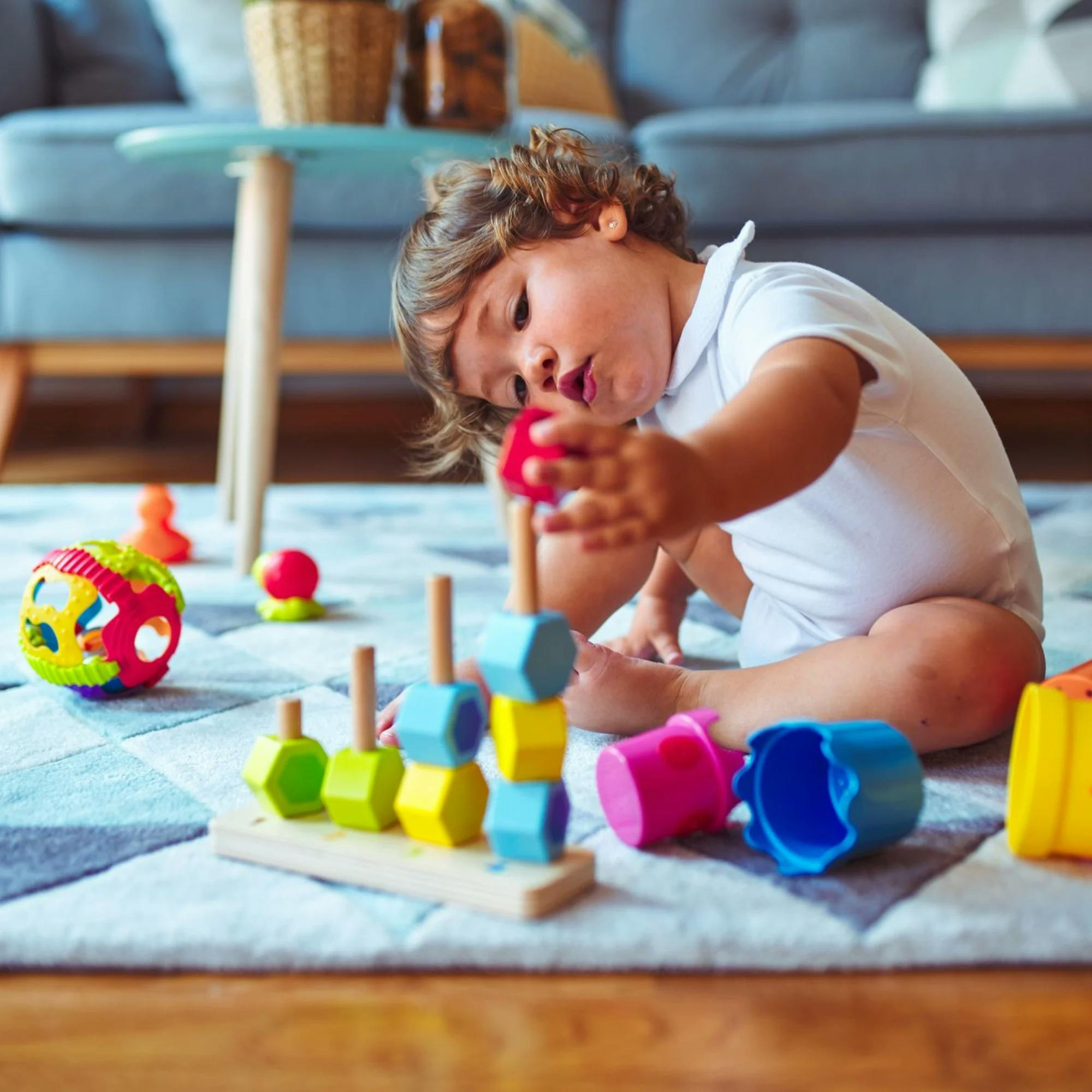
Milestone: Understanding what’s said to them
At around 9 to 12 months old, babies should begin to show that they understand what’s said to them. This is referred to as receptive language.
You might notice this as you read books to your baby or ask them questions. If you ask, “Where is the dog?” and they point to a picture of a dog or a little toy dog, that shows they understand what the word means.
The same goes for following simple directions. If you tell your child “Stop” or “Come here,” and they respond correctly, you can be sure that they’re learning these phrases. Babies and toddlers first have to learn what words mean before they can use them appropriately. Receptive language is a huge stepping stone toward growing expressive language skills–or the ability to communicate wants, needs, and thoughts. So be sure to notice and celebrate as your child begins showing that they understand what’s spoken to them!

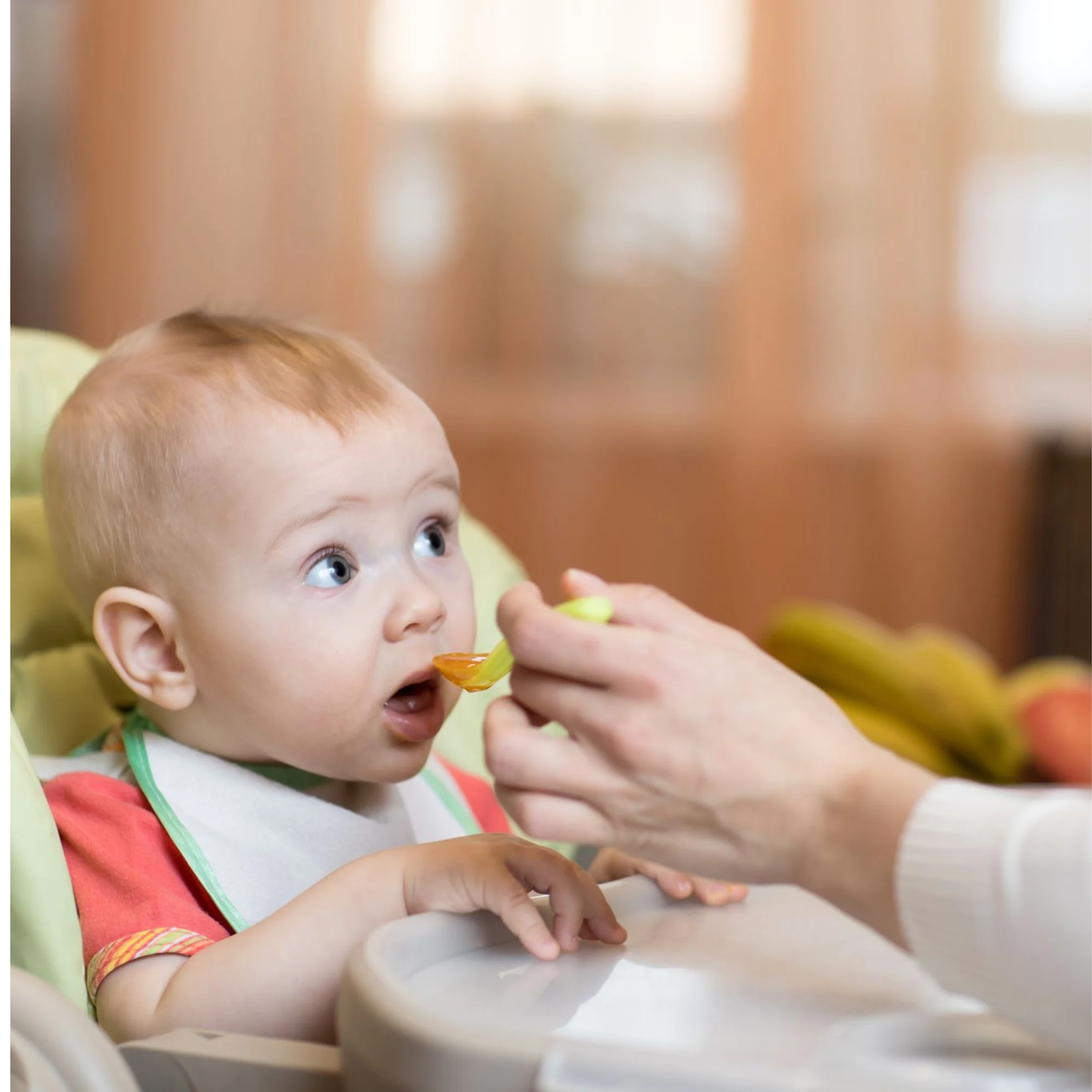
How do you know if your baby has a speech or language delay?
If your child isn’t demonstrating these skills at the expected ages, reach out to their pediatrician or a speech therapist. It never hurts to have an evaluation from a speech therapist, even at this young age. That’s because if your child has a speech or language delay, the earlier they start speech therapy, the faster they’ll make progress. Speech and language development is like moving up a ladder. One skill has to be accomplished in order to reach the next. The milestones discussed in this article are all necessary before your child says their first word. So start watching how your baby is communicating. You may be surprised to see just how much they’re learning as they grow!
How Expressable Can Help
Concerned your child isn't reaching age-expected milestones? Looking for communication support from a professional? Expressable is a national online speech therapy practice serving children and adults. We treat all major areas of communication and feeding, offer flexible hours including evenings and weekends, and accept most major health insurance plans. We’re proud to have earned more than 3,000 5-star reviews from our clients (4.9/5 average).
Our therapy model is centered on parent and caregiver involvement. Research proves that empowering caregivers to participate in their loved one’s therapy leads to better outcomes. That’s why we combine live, 1-on-1 speech therapy with personalized education and home practice activities for faster progress.
Communication is more than words. It’s how we share how we feel and show who we are. We’re here to help you or your child do just that.
 Abby Barnes, M.S., CCC-SLP
Abby Barnes, M.S., CCC-SLP